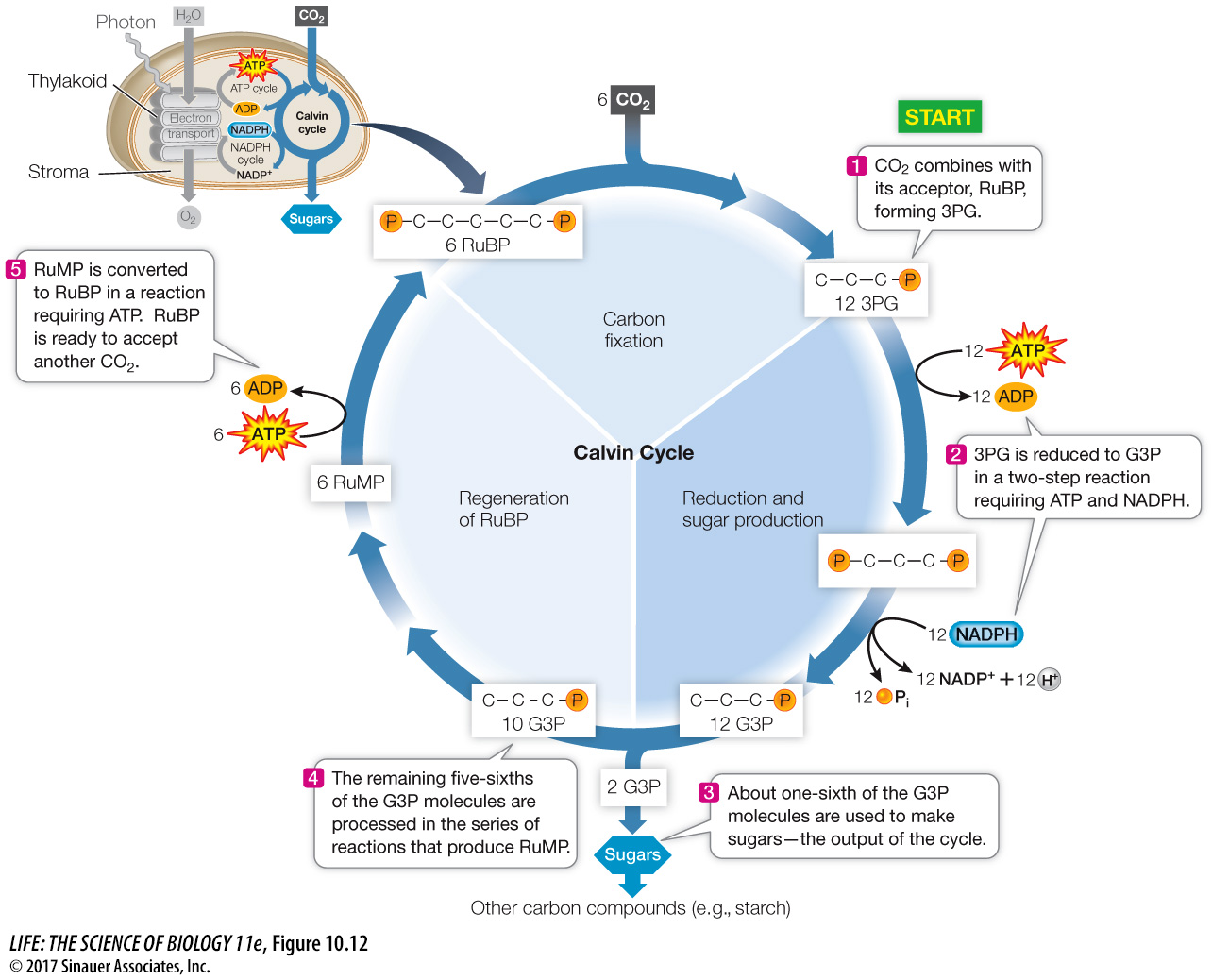The Calvin cycle is made up of three processes
The Calvin cycle uses the ATP and NADPH made in the light to reduce CO2 in the stroma to a carbohydrate. As in all biochemical pathways, each reaction is catalyzed by a specific enzyme. The cycle is composed of three distinct processes (Figure 10.12):

Fixation of CO2. As we have seen, this reaction is catalyzed by rubisco, and its stable product is 3PG.
Reduction of 3PG to form glyceraldehyde 3-
phosphate (G3P). This series of reactions involves a phosphorylation (using the ATP made in the light reactions) and a reduction (coupled to the oxidation of NADPH made in the light reactions). Regeneration of the CO2 acceptor, RuBP. Most of the G3P ends up as ribulose monophosphate (RuMP), and ATP is used to convert this compound into RuBP. So for every “turn” of the cycle, one CO2 is fixed and one CO2 acceptor is regenerated.
Activity 10.1 The Calvin Cycle
The product of this cycle is glyceraldehyde 3-

In a typical leaf, five-
Some of the G3P is exported out of the chloroplast to the cytoplasm, where it is converted to hexoses (glucose and fructose). These molecules may be used in glycolysis and mitochondrial respiration to power the activities of photosynthetic cells (see Chapter 9) or they may be converted into the disaccharide sucrose, which is transported out of the leaf to other organs in the plant. There the sucrose is hydrolyzed to its constituent monosaccharides, which can be used as sources of energy or as building blocks for other molecules.
Some of the G3P is used to synthesize glucose inside the chloroplast. As the day wears on, glucose molecules accumulate and are linked together to form the polysaccharide starch. This stored carbohydrate can then be drawn on during the night so that the photosynthetic tissues can continue to export sucrose to the rest of the plant, even when photosynthesis is not taking place. In addition, starch is abundant in nonphotosynthetic organs such as roots, underground stems, and seeds, where it provides glucose to fuel cellular activities, including plant growth.
The plant uses the carbohydrates produced in photosynthesis to make other molecules, including amino acids, lipids, and the building blocks of nucleic acids—
The products of the Calvin cycle are of crucial importance to Earth’s entire biosphere. For the majority of living organisms on Earth, the C—